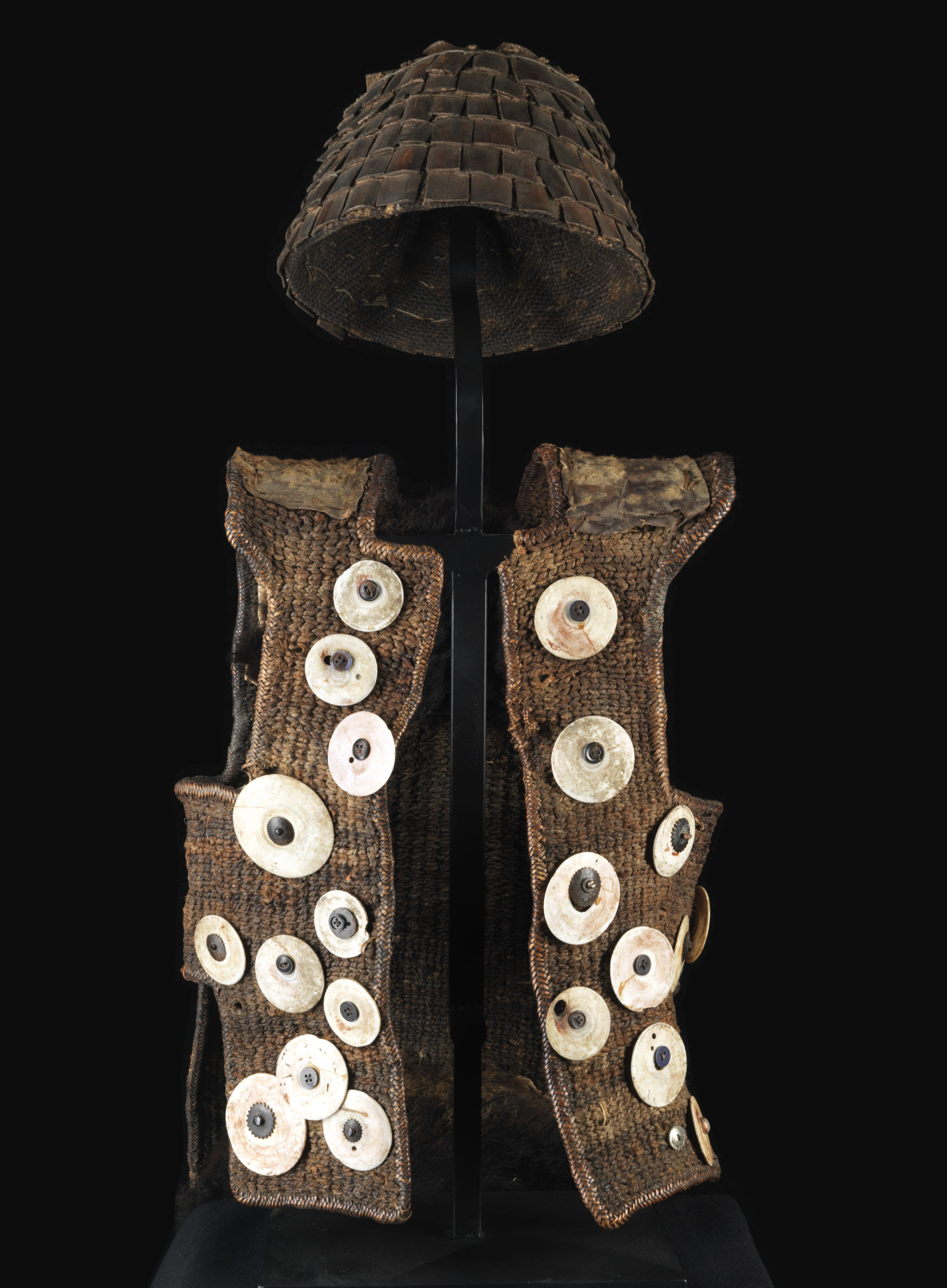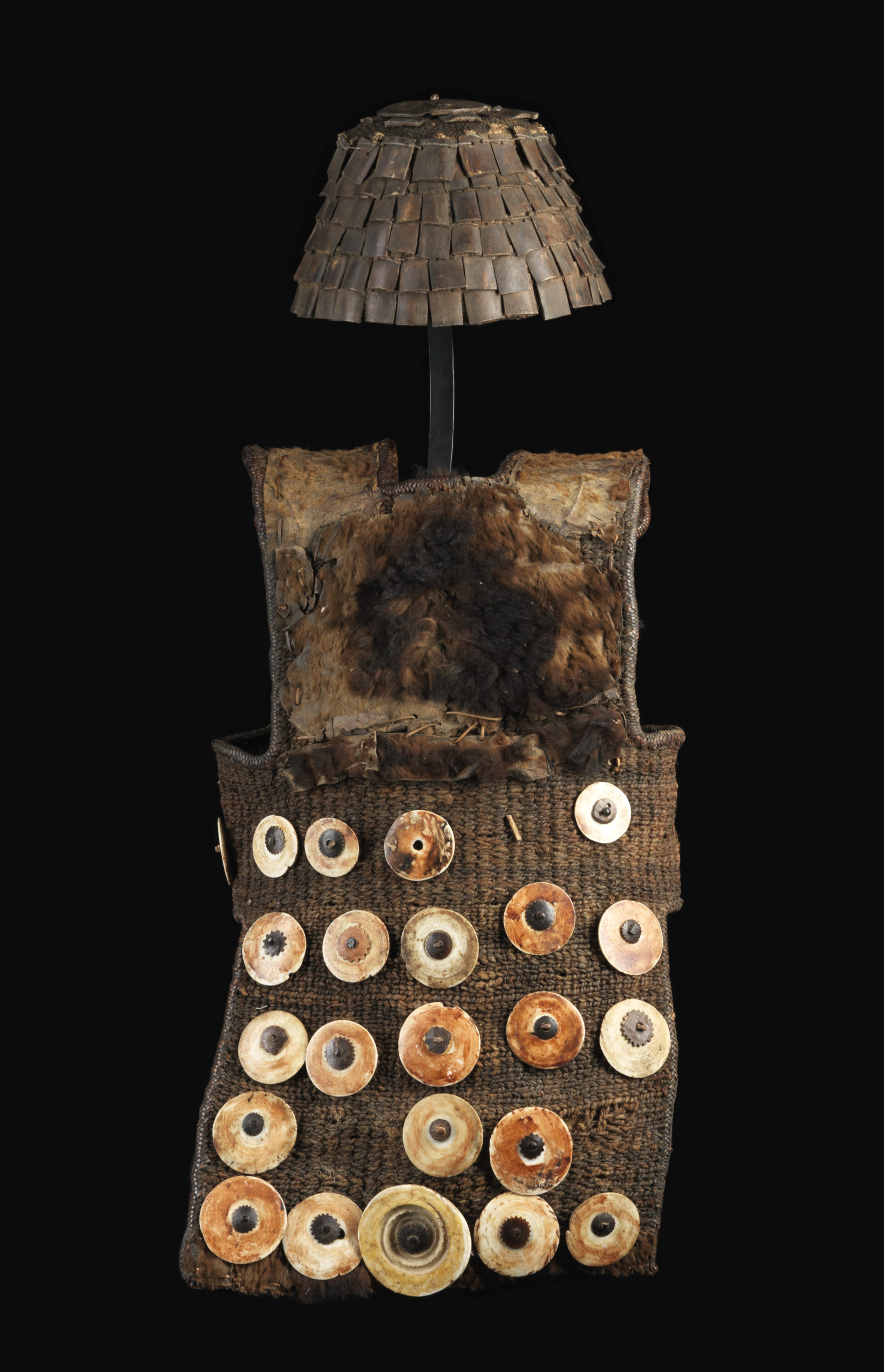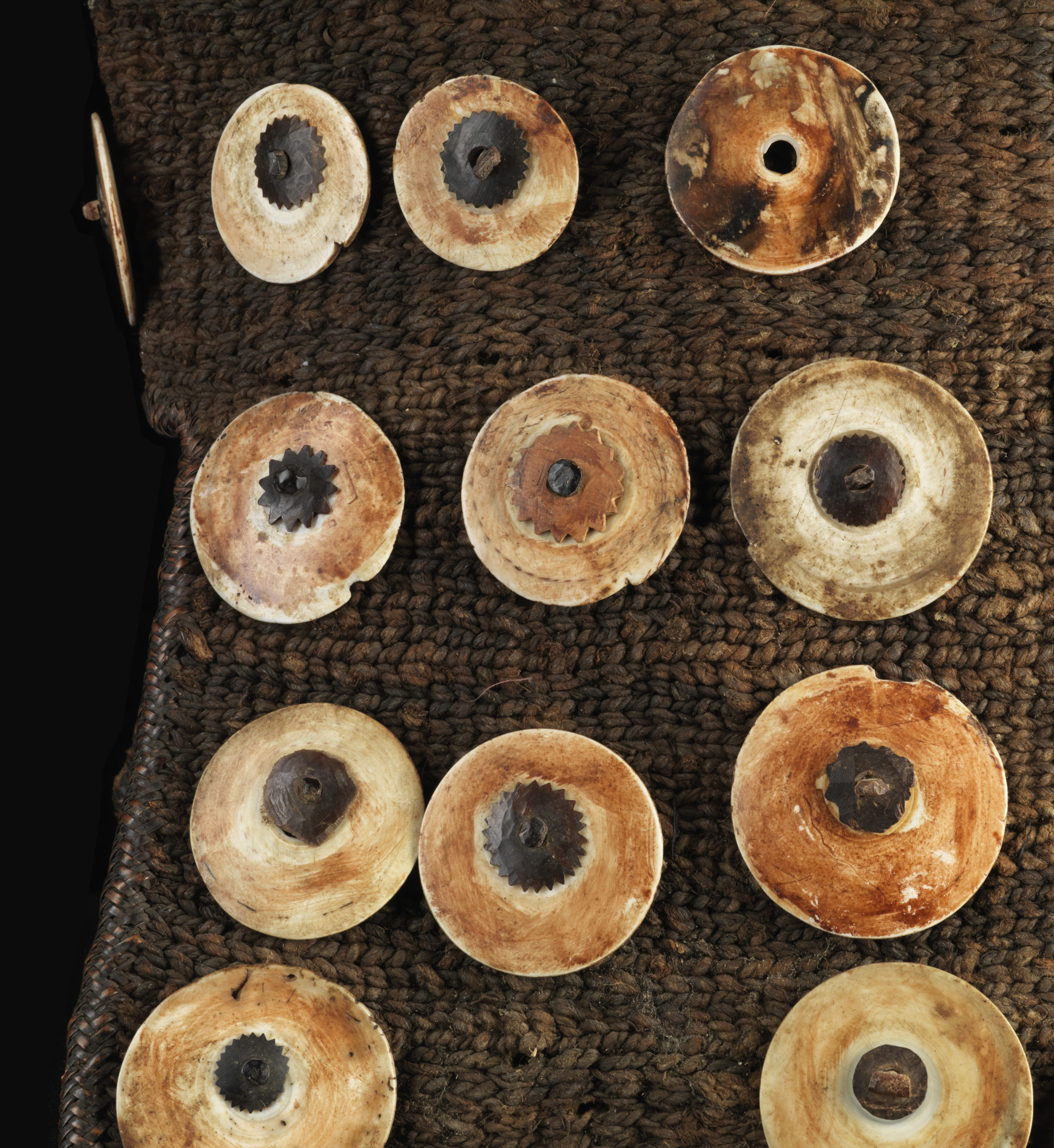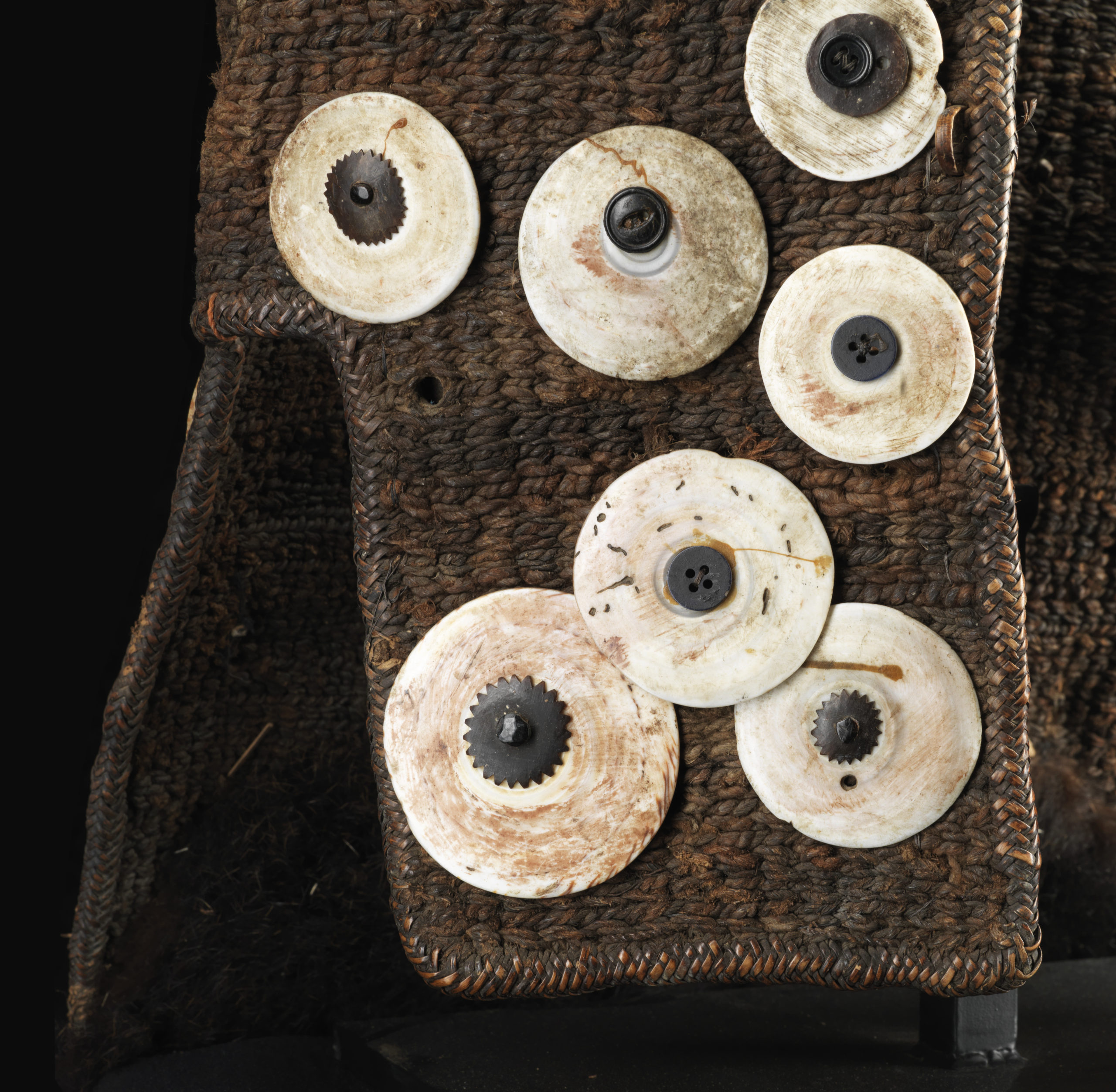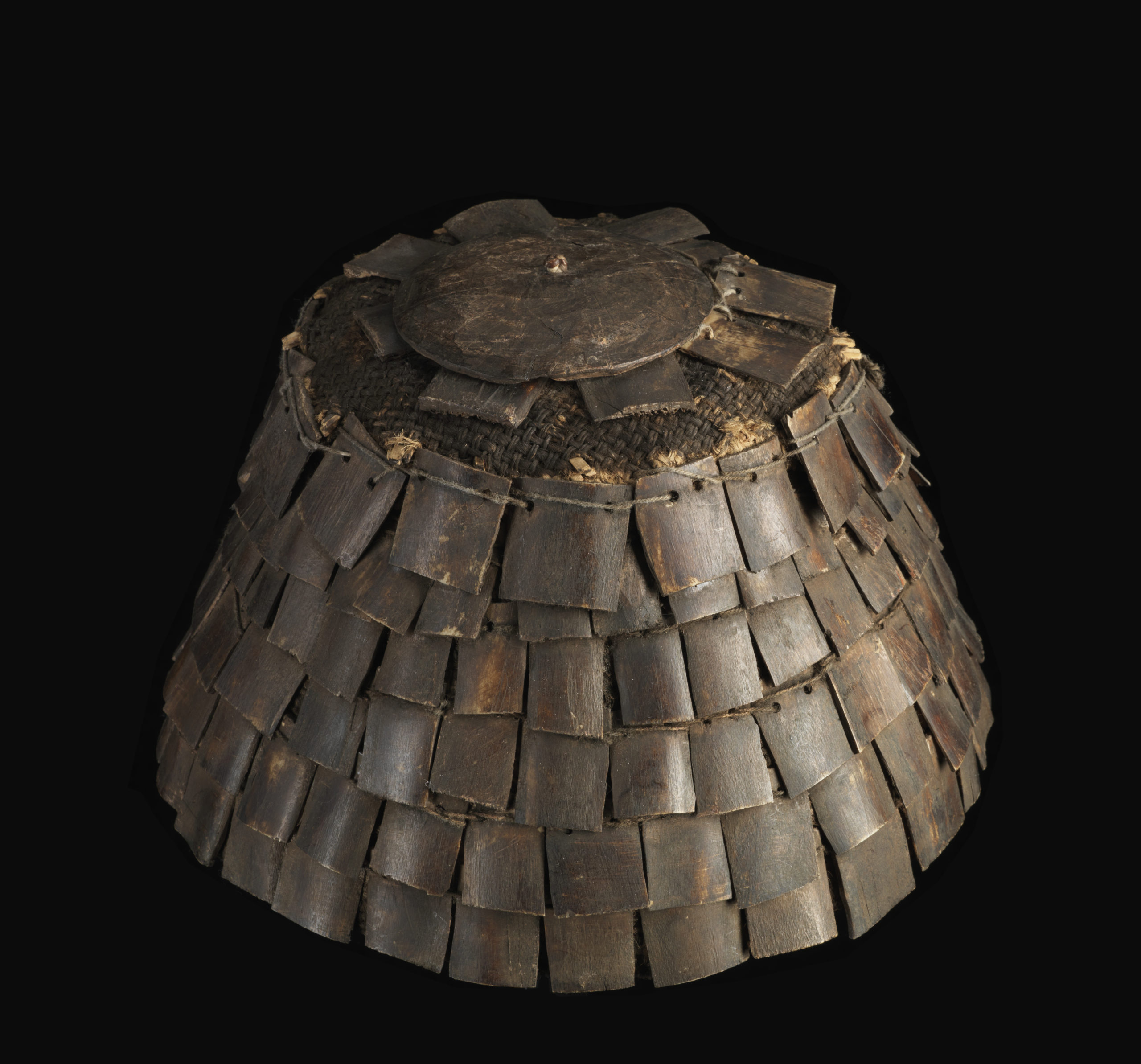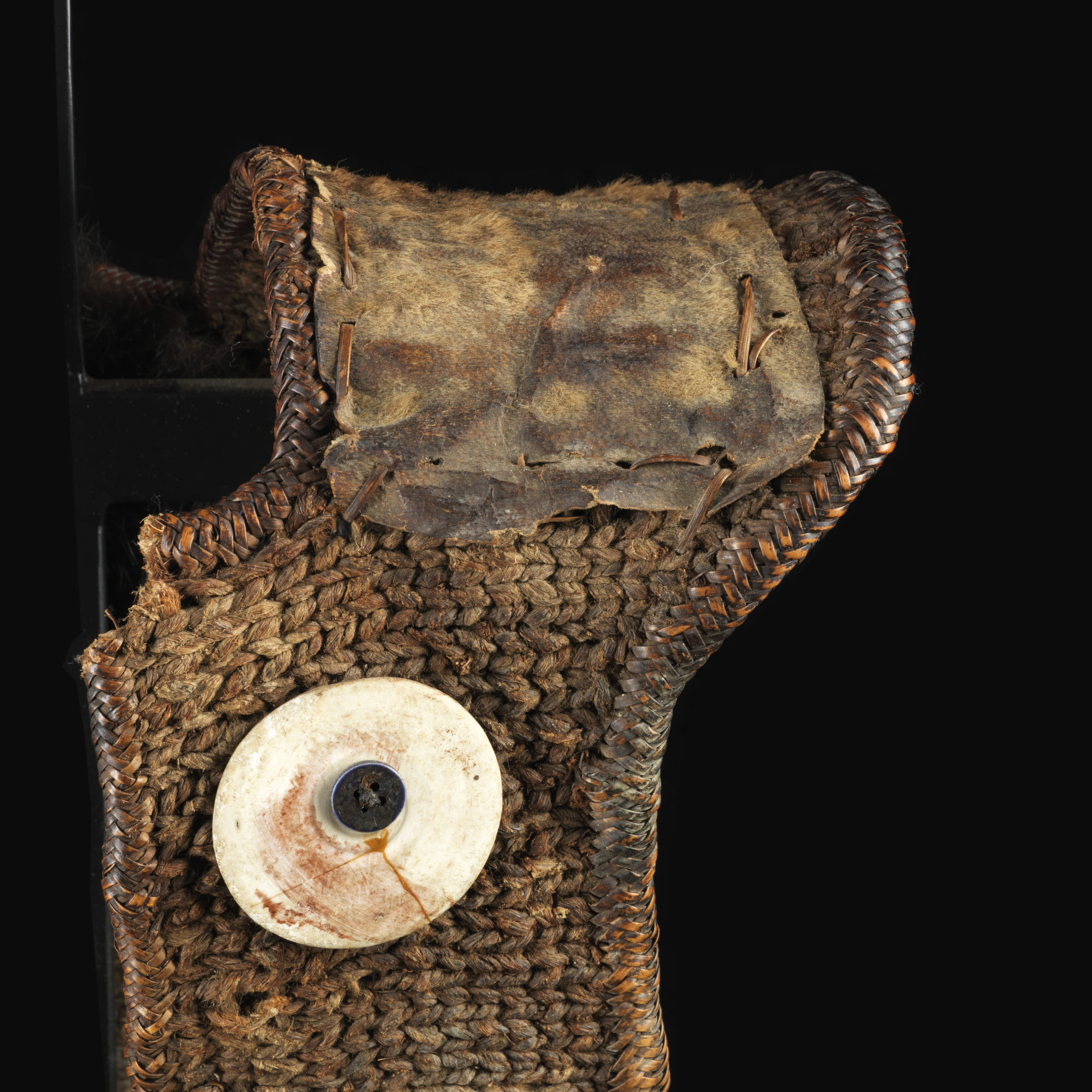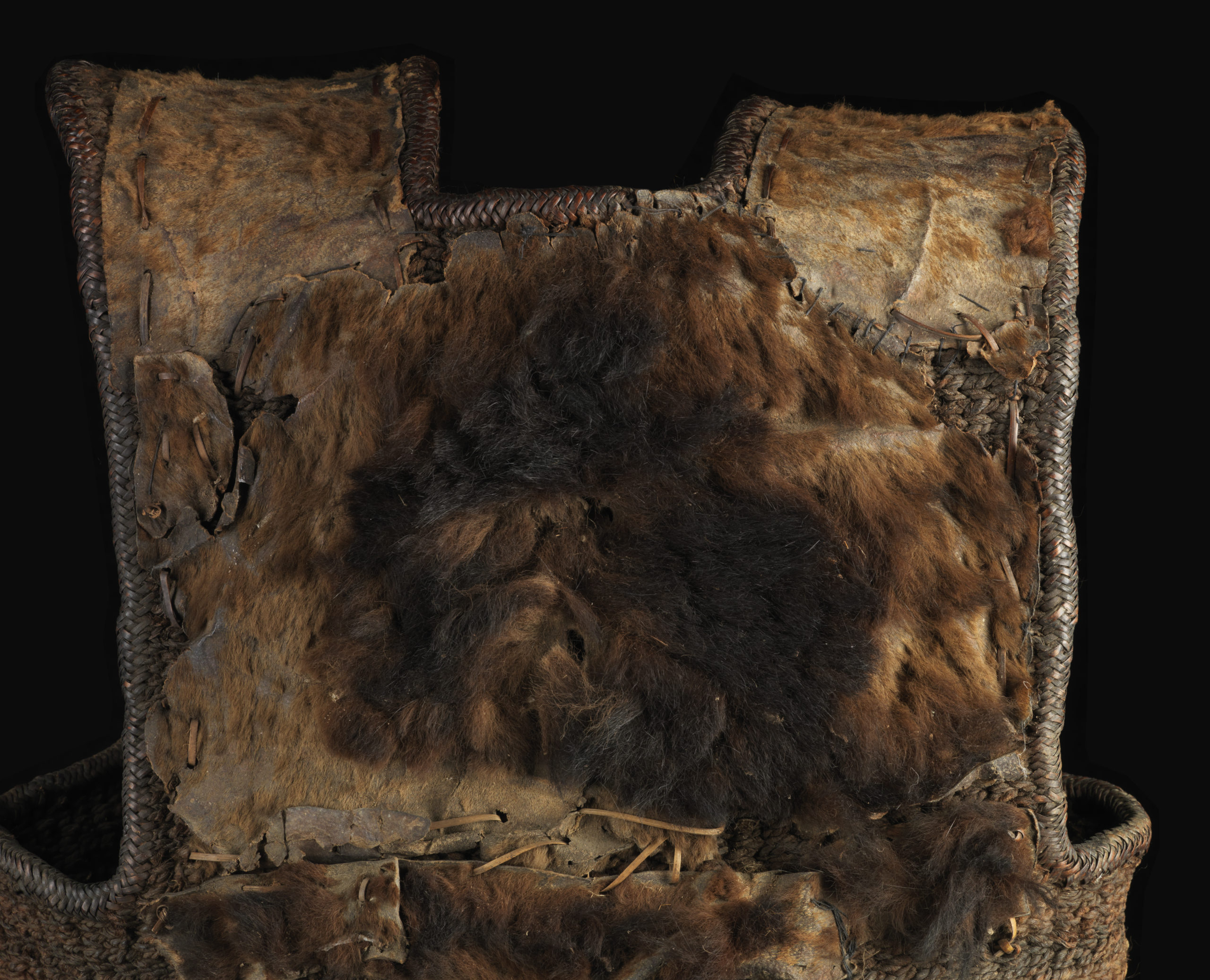War Waistcoat / Warrior Regiment baju pabarani
These armoured waistcoats were part of the warrior’s jewellery in the entire Toraja highlands of Sulawesi. The waistcoats are made of strong plant fibre fabric (e.g. coconut, bark bast), onto which different “scales” were sewn. They can be of very different types and made of a variety of materials. There are waistcoats known where each individual scale consists of a cast metal element or a carved platelet. In this case – very rare and highly valued in the highlands – they are cone snail discs. Also common are bone platelets, coconut shell parts, horn platelets, leather or rawhide lamellae, coins, chased metal platelets and a variety of other things. The rectangular Toraja shields are often made in a similar way, and often they form a creative unit with the war beings.
The war cap does not originally belong to the ensemble, but as a comparative example it matches this waistcoat. It is woven from plant fibre fabric as the basic structure and dyed horn plates are sewn onto it.
Because of the appliquéd elements, the waistcoats offered good protection of the body against sword blows; the head was well protected anyway because of the helmet and the edge of the shield. But the amulet character was especially important; the sewn-on elements often had magical power to ward off enemy curses and spells, which the richer warriors commissioned from specialised magicians against their opponents. The war helmets were often applied with stylised buffalo horns during celebrations, which promised wealth, fertility and success. It is striking how Indonesian war waistcoats and Japanese armour and helmets resemble each other – they probably go back to the same origins. In the past, war waistcoats in Tana Toraja were an important object of exchange between the clans at funeral rites and weddings and were passed on with pigs and buffaloes. Family relations were strengthened through weddings, festivals, valuable objects of exchange and sharing of the large family houses. The donors of such valuable objects were able to consolidate and improve their social status. Therefore, the importance of weapons and other precious objects is often based on their value as objects of exchange rather than their practical use. The social hierarchy determines who receives palm wine and is allowed to serve it himself, who is to decorate the corpses of the ancestors and make sacrifices, who sits at which place and receives which food at the festivals, and who is allowed to wear which personal jewellery. These “subtleties” of everyday and ritual life were and are of central importance for the harmonious structure of society and the avoidance of conflicts.
| Object | War waistcoat / warrior regiment “baju pabarani” |
| Culture | Sulawesi, central highlands, Poso area (?)/ Sadan-Toraja |
| Time | 19th century |
| Dimensions | Height 50 cm, Width 40 cm |
| Material | Plant fibre, animal hair, cone snail, animal skin, brass, buttons, glass beads |




